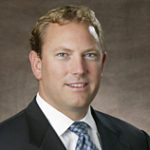
Solid Client Relationships are the Key to Success for Robert Young.
Robert Young is an executive vice president for Pacific Investment Management Company, LLC (PIMCO), heading its insurance business. Prior to joining PIMCO in 2008, he was a managing director in Morgan Stanley's global capital markets group, directing client coverage and advising insurance companies on capital raising, structured finance, risk management and investment strategy. He also spent considerable time working in the insurance industry at MetLife and Tillinghast, an actuarial consulting firm. He has 24 years of investment experience and holds an undergraduate degree from the University of California, Los Angeles. He is a Fellow of the Society of Actuaries (FSA). Mr. Young is married and has three daughters. He enjoys mountain biking and spending time with his family.Interview by Deborah Lazaroff
In your experience, what are the most important qualities and skills needed to build successful relationships with Life/Annuity and Property/Casualty clients?
Understanding portfolio management and the capital markets is of course Job No. 1. Beyond that, you need a strategic understanding of the industry and the company, as well as the ability to use that understanding to counsel both colleagues and clients. I also think it’s important to know how a company measures itself so that as a partner you can feed right into those metrics and deliver a product and service that are great value.
What are the greatest challenges you face in your target market?
One of the greatest challenges is the lack of a persistent catalyst to drive systemic outsourcing of portfolio management. Our entire industry tends to see the most business when there are dislocations or stress in the capital markets. To be sure, if there’s a movement toward outsourcing, PIMCO is in a very good position to win, but what also helps us is when we have these sort of systemic situations that catalyze outsourcing.
And what would be some of those systemic situations?
Well, for example, the real estate crisis in 2008 and the current crisis in Europe. These are the types of events that bring insurance companies to PIMCO. These events make the companies think more carefully about how they manage their investment portfolios and drive them to seek outside as opposed to inside advice.
And that’s when these insurance companies bring in PIMCO to help.
That’s right. Another challenge we face in our target market is “short memories” about the importance of investment performance on financial results. And when I say “short memories,” what I mean, for example, is the distance between the dislocation in 2008 and 2012, when time has passed and the markets have bailed out a number of company portfolios. Companies can tend to forget that there will be more storms to come.
What are some of the ways you work with clients to create that crucial atmosphere of trust needed to serve them most effectively?
To do so you need to provide unvarnished, real-time perspective on the markets and on each client’s portfolio. This is one of the cornerstones of PIMCO’s approach to our clients. We like to call it like it is, to push back when appropriate, and, in a very diplomatic way, challenge perspectives—even the perspectives of our clients—to give them the best counsel and service we possibly can. Another important aspect is follow-through—following through and meeting all promises and expectations, even the little ones like simply returning a phone call. When you deliver on promises your clients, your colleagues – everyone with whom you work – do the same for you. They meet the promises that they make with you. It works both ways. If you’re not disciplined and you slip up, then other people aren’t disciplined when they’re dealing with you.
Trust is definitely developed on both sides through effective follow-through. And that element of trust is so crucial on your part, because of the sensitivity of what you’re dealing with.
Exactly.
What are the core communications skills essential to building such trusted relationships with your clients?
Listening is extremely important. And by listening, we mean really working to understand what the client is saying – or isn’t saying. It’s also very important to be yourself – to be authentic and to be seen and heard as authentic.
What are some of the things you do in endeavoring to understand a client’s particular needs and fears, and whatever else might come into the equation in helping them build their portfolios?
First, we do the homework, which includes following the company and reading its financials. We work hard to understand the company’s situation – its business, its marketplace, how it is perceived by its own clients. From there we probe to get at what motivates and worries the company. Our approach is to ask a lot of questions. This helps us to be a better partner, to reflexively respond more effectively to the client’s needs in identifying opportunities. In the end, we aim to find the crossover points with PIMCO’s capabilities and what we can deliver.
What would you describe as “crossover points”?
The idea is to find the point of intersection between what we can deliver and what the client needs. PIMCO has a broad set of capabilities. Having said that, we are not all things to all people. We have to be honest with ourselves about the particular crossover points and identifying the nexus between what the client needs and what we’re able to deliver. That said, PIMCO has a broad set of remarkable capabilities, so there are numerous crossover points for what we can deliver to our clients.
In the process of building the relationship with the client, including determining their specific needs and how to meet those needs, how deeply involved are your people in building ongoing relationships? Do the clients work with the same people at all times, or are there different groups with whom they work and have to rebuild trust?
That’s a good question. There are two types of relationships. There are the relationships with the clients, which is what you’re directly referring to. But what’s just as important is having very good relationships across PIMCO so we can take advantage of the broad capabilities I’ve been talking about. Think of it as one large virtual team, and it’s my group’s responsibility to string the pearls together. So if a client has a specific need—for example, inflation—we don’t necessarily have all the capabilities to address inflation within our group, so we reach across PIMCO to help the client develop a greater perspective and address its concerns. But to answer your question more directly, the team does have the responsibility to build relationships directly with clients. It happens naturally. The best way to build such relationships is to “go to battle” for your clients, and I mean that in a positive way. It’s a very interactive relationship, with daily interaction revolving around solving problems and dealing with complicated issues. With daily interaction on relatively in-depth topics, building a relationship tends to take place naturally—provided we’re good listeners, and authentic, and have a thorough understanding of the company.
So it’s not just building relationships with your clients, but also building relationships within PIMCO so you can identify the proper resources to answer questions or deal with certain aspects of the portfolio in which you or your team members may not personally be expert, but that others within PIMCO are.
Right. That’s it exactly.
As a team leader, what specific skills do you draw upon to lead each member as well as the team as a whole to success?
We use our understanding of the industry and corporate finance dimensions that affect decision-making. Our overall objective is always to create a true team that as a whole has the requisite skills to effectively collaborate with insurance clients. Most important, we aim to be direct, straightforward and precise with questions.
Are there requisite skills that need to be developed to work with insurance companies in particular?
Yes. Point number one is that the insurance company balance sheet is complicated. For example, insurers write a number of different liability policies – auto, home, life, annuity – and many of these have capital market sensitivities. The asset side is also very complicated. They invest in everything in the capital markets, from treasury bonds to corporate bonds to mortgage-backed securities, mortgage home loans, common stock and private equities. So insurance companies have a very complicated balance sheet, which presents a complicated starting point. In addition, they’re often public companies, so they have investors, they’re rated by the rating agencies, and there are tax consequences to the decisions that they make. We need to understand the balance sheet, but we also need to understand the constituents that look at this balance sheet. We need to be able to stand right alongside senior people – the CFO of the company, the treasurers, the CEO – empathize with them and understand how their constituents see them.
Public companies are more vulnerable because of the range of investors.
Yes. They have bond investors, equity investors, rating agencies rate them – are they an AA company, an A company, a BBB company? – all of these have consequences for their financial standing. When I say we build a team that, in whole, has the requisite skills to collaborate, what that means is that no one person has it all. Across the team, we need to have an understanding of accounting, asset liability and management, the tax consequences of different investment ideas, etc. We need to be able to deliver a variety of capabilities to the client.
Now typically, people in the financial industry tend to be a little more cerebral. They tend to come from mathematics or accounting backgrounds, or technical or scientific backgrounds like physics. Do you find that there’s a need to draw these people out so that they will be more effective in working with clients?
Absolutely. You bring up a good point. I’m an actuary by training, as are other key members of the team. We don’t have any physicists or the like, but we do have them in other parts of PIMCO. And they definitely have unique qualities we need on our teams. We need these core technical skills, but the team also needs to be client-facing. They need to be interactive, clear, and persuasive. It’s really a special individual who can bring capital market skills, the technical skills, as well as the business savvy and the ability to effectively interact with others.
Exactly. Because building a relationship with the client is so crucial. And sometimes people with very strong technical or scientific backgrounds are not as people-oriented or outgoing. It’s not part of their training. So sometimes it’s an adjustment for them to learn how to effectively work within a consulting environment. People that go into direct, client-facing work are in general people who enjoy working with people. But you may on occasion get a technical expert who doesn’t particularly enjoy working with people. Is there something you do in particular in training that person because their skills are so needed? Or do you just rely on them for their technical skills and have someone else do the direct client contact?
We do a fair amount of work on the front end as we hire people to make sure they possess poise and presence and that they have the capability to succeed. We use Bob Mobley to help us refine our skill sets and eliminate the idiosyncrasies and quirks that we all possess in some form or fashion in order to enhance our ability to influence others.
How has Bob Mobley helped you and your team to cultivate and develop your skills?
Bob emphasizes the importance of listening—the fact that you can’t listen and you can’t hear when you’re talking. Bob also emphasizes the importance of being oneself, of being truly authentic, because doing so builds trust.
What are the key communications challenges facing you and your team in your work with clients?
One of the most important is getting on the same page about difficult concepts. It can be surprisingly difficult to overcome semantics. It’s important to focus on finding the “win-win” with the client.
I can imagine that getting on the same page might be quite a challenge, especially if it’s almost intuitive for you to understand the concepts. Explaining them to the client may be an entirely different matter.
There are many concepts in investment management in partnership situations. Here at PIMCO we have very specific ways of doing things that we’ve built up over our 41-year heritage. And some of these concepts – for example, around benchmarking – can be new concepts and difficult to accept, understand and adhere to. So the challenge can be in language, in the way we describe ourselves. Sometimes we’re good at it; sometimes we’re not as good as we’d like to be. Sometimes the challenge is in listening to and understanding the client’s point of view and building the bridge between how we’re communicating ourselves and how we understand the client’s point of view. The goal is to build a bridge between us and the client so that we both win. Sometimes building that bridge is as much of a communication challenge as it is a technical or intellectual challenge.
How would you say Bob Mobley has helped you in building that bridge?
Bob has taught us that it starts with listening first. It sounds simple, but it’s a skill that we could all improve and become more attuned with. Listening is part and parcel of asking the right questions to truly understand the client’s point of view. That’s where it all starts. Bob has helped us with the importance of listening, the importance of silence, and the importance of preparation. All of these concepts seem very simple, but they really aren’t, and Bob helps us to refine these skills. He also helps to understand the importance of keeping it simple to draw out the client. If we keep it simple and are ourselves, we develop better rapport and therefore better relationships with our clients.
One of the areas in which Bob has been working in recent years is not to become too reliant on tools and technology like Flash or PowerPoint presentations. Has he discussed this with your team members in terms of using them effectively?
That’s definitely a principle that Bob has conveyed and reinforced in us. It ties in with keeping it simple – of having a firm understanding of the agenda and making sure the client knows our objectives. Bob has taught us to make sure that we deliver our objective upfront, which is to understand the client’s needs and concerns and that our goal is to partner with the client in a certain way to do business with them. In other words, to eliminate any unsaid messages at the outset so that the client knows our intentions.
That’s the kind of straightforward communication that you don’t often see, but is so crucial, especially in the financial services industry. Having clear communication at the outset and stating your agenda upfront so there is no misunderstanding on either side. As I understand it, this is one of PIMCO’s principles as well.
Yes, but there’s a lot of nuance to that, and Bob has helped us to refine it. After all, getting to the point first means different things to different people. What Bob teaches is that you really have to take a step back and have the emotional intelligence to understand your client ahead of time. You’ve got to anticipate the clients’ body language, anticipate their needs, and then when you’re in the meeting you’ve got to be prepared to react accordingly depending upon what’s going on with your client.
Anticipation is truly vital to building client relationships. It’s not enough to know your job or to know your client’s needs. From the outset you need to be able to anticipate their needs so you’re prepared to deal with a broad range of contingencies.
I like that word, “contingency.” You need to think things through, step by step. If I go in this direction, this can develop, and it might follow this path – and if I go down another path, what will develop from that?
So there’s a lot of analysis involved. Do you find that the amount of analysis to be done affects spontaneity when it comes to working with clients? Do you think there’s a risk of being over-prepared for every contingency, or do you believe it makes your people more flexible in dealing with each contingency when or if it arises?
I think it’s the latter. The team in general needs to be prepared for contingencies. They need to be thoughtful about contingencies. That’s why asking questions is so important. You have to go through your FAQ – hypothetically ahead of the meeting and during the meeting as well. There’s probably not enough of that, and the tendency is to fall back into talking your own book.
Exactly. Talking about what you have to offer, what you can do instead of asking about and determining the needs of the client, and anticipating what their future needs may be. That’s all in the preparation, knowing your game and being able to reflexively respond to the client.
Right.
You mentioned that another communications challenge is overcoming semantics. By semantics, do you mean the technical jargon, or being more straightforward with the client and getting to the agenda at the outset?
Honestly, it’s all those things. There’s the jargon that we use within PIMCO. For companies that are frequent outsourcers, that jargon might resonate. But for clients that are less frequent outsourcers, it might be new jargon that we need to explain. But we should always be very careful about using jargon, no matter what the situation. If we’re far apart, is it because we aren’t communicating effectively? Not listening well? Or are we not getting through to them because there’s a disconnect on the ideas? It’s important to be able to identify which it is. If we could be better at this, we’d be more effective.
That’s right. The danger in using your own jargon around clients and thus expecting them to adapt to it is that it becomes less a matter of you meeting their needs and more a matter of them adjusting to working with you. And that’s something you don’t want to happen. You want them to feel that you are adjusting for them and that they don’t have to adjust their language, their semantics for you.
Exactly.
That’s treading a very fine line, because people do become reliant on jargon. It’s very typical for most companies. But to be able to communicate with a client on their terms and not on your own is a huge part of building successful relationships with clients.
Spot on. And you know, that’s a skill that one can always improve. It’s like marriage. Active listening, trying to understand the other person’s point of view, and doing it in a way that is never condescending or heavy-handed.
Finding the “win-win” with the client isn’t always giving them exactly what they want, is it?
That’s right. But it’s a mixture of listening and convincing them that we understand where they’re coming from, but we’re aiming to collaborate in order to bring them to a better place.
And trust is a huge part of that. That they trust you enough to know that you’re doing what’s best for them, that you’re basically working towards what’s best for their investment. Now, how has Bob Mobley helped you meet these communications challenges?
Bob is especially helpful when it comes to identifying each person’s individual idiosyncrasies that can distract from effective communication.
What are some of the idiosyncrasies that Bob has identified?
Honestly, it’s relatively straightforward. That we, as sophisticated professionals, forget the simple things, that we use filler words like “um” or are verbose or convoluted. Bob teaches that being precise with our language is much better than being verbose, and he shows us how to be efficient in both language and approach. It’s getting to the point quickly. In other words, focus on your client, get to the point quickly, be straightforward, make eye contact, listen, learn to read body language and use silence to give yourself time to think as well as allow the client to participate.
And also to be flexible and responsive to what’s actually happening within the meeting. You may go in there with a set agenda, but things may go in a different direction. And depending upon how and why they’re going into a different direction, you will either steer them back towards the agenda or respond to the issues that have arisen. Has Bob discussed flexibility and responsiveness with you?
Oh, absolutely. His concept of silence plays a big role in being flexible. Silence gives people time to think and to be flexible in their responses. Bob has also helped each of us improve our ability to influence others.
How has he helped you in that regard?
Bob makes the point that if we are effective communicators—and especially effective listeners—we’ll more quickly earn the respect of our clients and come across as cogent, credible and influential. He also believes that if you’re prepared, you know where you’re going, and you make it clear where you’re going, it’s easier to get your colleagues to do what you need them to do, and it’s easier to bring your clients over to your side.
What are some of the differences you’ve observed in yourself and in your team since you began working with Bob Mobley?
One difference is that we often reflect on the lessons we’ve learned from Bob. We’ve learned to stay focused on our goals and objectives, and get them out there to the client, who needs to know them. And we’re doing a better job of keeping it simple, and cutting to the chase.
Do you discuss the lessons that you’ve learned from Bob?
Yes. For example, we’ll chuckle among ourselves when we’re doing something that Bob would take exception to. And we’ll often say, “What would Bob do?” That comes up quite a bit. The most obvious example is beating around the bush. If you’ve reviewed as many presentations as we do, and you look at the way the pages are ordered and then take a step back to critique your work by visualizing the person with whom you’ll be speaking, it could lead to an entirely different approach. It’s the concept of jumping to the chase, of being simple and straightforward and really thinking about what you’re going to say. After all, your client is busy.
In other words, determining what you need to tell them within a five- to 10- minute time frame that will get them on your side and interested in hearing more.
Absolutely. You’ve got to get them on your side in the first five minutes, and that will keep them captivated for the next hour. If not thoughtful, your audience will leave, or they’ll fall asleep. The client needs to know what our goals and objectives are, so we need to get them out there as quickly as possible.
That’s a lesson Bob really hammered home for you, isn’t it? To always get to the point, the objective, the agenda.
Definitely. It’s almost as though there’s an elephant in the room. Eliminate the elephant in the room by explaining exactly why you’re here, why you’re meeting together. That’s part and parcel of having a clear agenda. Eliminate any question marks about the agenda, and make it clear that there’s no hidden agenda. To make it clear what you’re vying for.
Doing a better job of keeping it simple and jumping to the chase. Would you say you’ve seen a lot of growth in your team since you began working with Bob?
Again, absolutely. It’s something that we have to continually work on, because it doesn’t take care of itself. It’s practice, practice, and practice, constantly tuning up. But there are definitely a great many very good core skills that Bob has drawn out and impressed upon us. He’s been very valuable to the team, which is made up of approximately 10 very senior people who went through his training. The team, to the person, has been very, very impressed with the improvement in selfawareness skills and capabilities.






